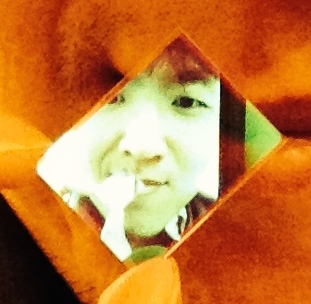At the entrance to the central pavilion of the 56th Venice Biennale is a restorer’s ladder—three stories tall, made of two long staves of veined wood and girded like a construction crane with two lattices of peeled iron. The ladder (Fabio Mauri, “Macchina per fissure acquerelli”) reaches up and back to Galileo Chini’s painted dome, first erected in 1909 for the 8th Biennale. The ladder is a gesture; it feels and looks temporary, yet it has all the tart flavor of a Lichtenstein one-liner. The ladder is telescoping upward and backward to some imagined beginning.
This year’s theme is “All The World’s Futures”. What a hopeful title. The future is associated with kids (America), robots (Belgium), and chrome skinsuits (South Korea), so all the futures can only mean all the kids, all the robots, and all the metal eyeshadow. The theme, whatever it’s supposed to mean, functions as a trick. The more you stare at some icon of the future hanging or projected on the beige prop wall, the more you feel like you are being dragged relentlessly into some regressive French movie about the American 80’s, like you have opened the door to a dour, fat-faced salesman trying to sell you on the next new gospel. The future has never seemed so off-kilter, so imbecile.
Art, like bread, is meant to be consumed. Art fills you, it soaks up excess alcohol, and it makes you sick if you consume too much. The Biennale is a feast. You walk around, and there are Adrian Pipers to enjoy, Young British Artists to mock, an epically boring live reading of Das Kapital, tourists going on benders with selfie-sticks, Venetians glowering in the backlight. Some of the pavilions were atrocious; some of them were sublime. The German pavilion was a hot mess of hipster lawn art and commercials for video games I would never play. At the Japanese pavilion, Chiharu Shiota somehow both submerged and elevated the entire exhibit under a skein of red thread, keys, and sunken boats, creating another horizon where heaven meets the sea. The Norwegian pavilion was anomalous, architectural, modern, and striking. The French pavilion, like the Belgian, has robots. You can walk through the entire exhibition hall, from the Giardini through the Arsenale, and find good art, bad art, blameable art, art which is forgivable because it is, after all, only art. What you will not find is art that gives you hope for the future. Art—fine art, collected art, curated art—does not belong to the future, at least not as robots belong to the future.
Art is a sideshow to progress.
(to be continued…)
